Table of Contents Show
Amazon.com Inc. is the world’s largest online marketplace. Amazon has experienced exponential growth through a diverse spectrum of industries under founder and CEO Jeff Bezos. The Amazon Business Model includes its core e-commerce operations, cloud computing, and digital advertising for the consumers.
Additionally, it offers the Alexa personal assistant and ecosystem, the Kindle e-reader, the Fire TV, and movies and television shows through its Amazon Prime Video service.

Alibaba Group Holding Ltd. and Walmart Inc. (WMT) are among Amazon’s biggest competitors.
Amazon’s business model is diverse. Amazon earned more than $280 billion in sales and more than $11.5 billion in profit in 2019. The online store of Amazon accounted for more than half of Amazon’s revenue, led by Physical Stores, Amazon Web Services, Subscription Services, Third-party Seller Services, and Advertising.
Defining the Amazon Business Model can be an odd challenge, given that this multinational commerce behemoth continues to expand its scope year after year, both globally and in terms of goods and services provided.
1. What is the Success Story of Amazon?
Jeff Bezos founded Cadabra in 1994, determined not to be left out of the website boom, in an attempt to break into the burgeoning world of online business.
Recognizing the global interest in publishing, Bezos’ company initially focused on selling books. Bezo’s main understanding was that by operating as an online book shop that connected clients specifically to book suppliers, his company would be freed from the constraints of restricted stockroom calculation, and would have the capacity to stock a few times more titles than standard physical bookshops, while additionally offering less costly prices.
Within a year, he renamed his company Amazon, and by 1997, its shares were being traded on a free market on the NASDAQ.
A few speculators were initially frustrated by Amazon’s enticing marketable strategy, in which no profit was expected for at least four years. Still, such concerns were alleviated when, in the year 2000, while the same number of its rivals crashed as the website bubble burst, Amazon continued to develop.
By 2001, Amazon had proven the doubters wrong and was unquestionably making a profit, demonstrating the reasonableness of Bezo’s course of action.
From that point on, Amazon went from quality to quality. SinceAmazon’s 2001, Amazon’s share costs have risen nearly year on year as the company expanded all over, occupied with a series of notable acquisitions, expanded into various retail areas, and built up its notoriety as an online business behemoth.
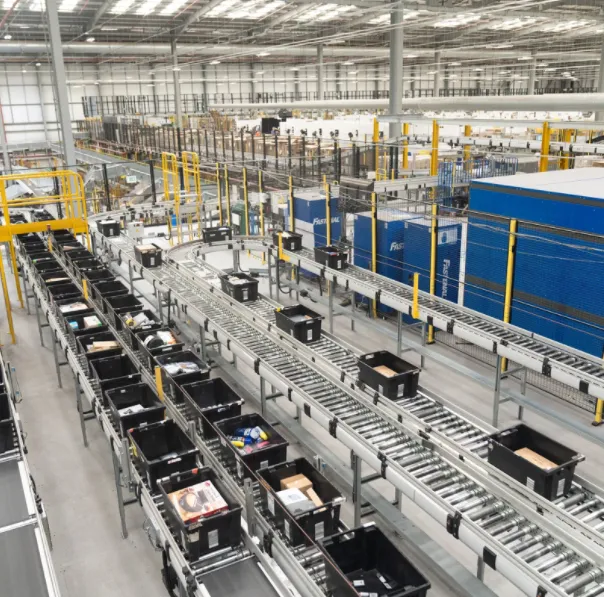
Amazon has continued to expand its field, solidifying its reputation as a retail behemoth with such projects as Amazon Prime, which offers regular clients free express delivery with a yearly enrollment fee.
Amazon has also ventured into shopper hardware, releasing the Kindle line of digital book readers and tablets.
While the Kindle digital book readers were heralded as extraordinarily imaginative products upon their initial release, subsequent versions of Kindle tablets have not enjoyed the same degree of advancement or share of the pie.
Amazon’s push to improve its market operations has resulted in the emergence of revenue sources from advanced media, providing customers with access to movies, music, and games.
Amazon also joined the world of online staple delivery in 2007, launching AmazonFresh to provide food for American customers. In 2010, Amazon expanded into film and television production, establishing Amazon Studios to provide exclusive content for their internet gushing administrations.
Regardless of their inextricably different market practices, the lion’s share of benefits still comes from online shopping. Amazon maintains its globally dominant position as the largest store on the planet.
In 2015, Amazon made a significant advancement by becoming the largest retailer in the United States in market capitalization, finally outflanking their physical competitors Walmart intriguingly.
Amazon continues to demonstrate its commitment to innovation and transforming the way we shop, with Amazon Prime Air being one of the most energizing and progressive administrations being built at the moment.
This administration, which is expected to launch shortly, will see Amazon deliver a half-hour conveyance value using flying automatons. This is simply the most recent chapter in Amazon’s account of consistent retail growth.
Amazon shows no signs of slowing down, with its sheer scale, the share of the overall market, and assets at its disposal, putting it in an excellent position to disrupt the routes in which we spend all manner of merchandise in the future.
2. What is the Amazon Business Model ?
Amazon’s business model, which was originally focused on eCommerce, has evolved to include movies, music, cloud computing, meal delivery, and much more.
Amazon’s primary source of revenue is online shopping.
Amazon sells a huge variety of physical products, but their online store also accounts for most of their revenue.
Advance income is generated by taking commissions from third-party vendors that use the Amazon platform.
Amazon’s offer of Ebooks and gushing of advanced content has become a growing wellspring of revenue in the most recent decade.
Other, smaller revenue sources include the Amazon Prime membership fee and the sale of Amazon’s Kindle hardware line.
The Amazon business model is a set of business models rather than a single agency.
Amazon has quickly changed, adapted, and developed itself as one of the most powerful corporations in history. Amazon, like AWS, has a global presence and delivery capabilities, and it sells both digital and physical goods.
Amazon, for example, has used its technology to change the shopping experience with Amazon Go stores. Traditional retailers, such as Walmart, are no longer immune to Amazon’s attack.
Amazon’s business model has evolved from eCommerce to supermarket.
Amazon’s over the past few years has focused on Payments, Logistics, Pharmacy, Media, and Consumer Brands (among other areas). Underpinning this is, of course, the company’s ongoing investment in technology, whether by R&D or acquisitions.
“Your margin is my opportunity,” said Jeff Bezos famously.
Amazon is now seeing openings in markets that were impossible for the company to enter just a few years ago. We’ll look at Amazon’s future in more detail later in this post. But first, let’s take a look at the company’s overall size.
3. How Does Amazon Make Money?
Amazon earns money from five distinct ways, i.e., Online Store, Amazon Web Services, Amazon Prime, Physical Stores, and Physical Stores. The highest revenue of Amazon’s income comes from direct purchases on the main site or from third-party commissions.
An overview of Amazon’s Revenue from its various services are listed below:
| Amazon Services | 2020 | 2019 | 2018 | 2017 | 2016 | 2015 |
| Online stores | 197.35 | 141.25 | 122.99 | 108.35 | 91.43 | 76.86 |
| Physical stores | 16.23 | 17.19 | 17.22 | 5.8 | ||
| Third-party seller services | 80.46 | 53.76 | 42.75 | 31.88 | 22.99 | 16.09 |
| Subscription services | 25.21 | 19.21 | 14.17 | 9.72 | 6.39 | 4.47 |
| AWS | 45.37 | 35.03 | 25.66 | 17.46 | 12.22 | 7.88 |
| Others | 21.45 | 14.09 | 10.11 | 4.65 | 2.95 | 1.71 |
Note: The amount listed is in billion dollars.
4. Amazon Business Model Canvas
The Amazon Business Model Canvas can be seen in the business model canvas below:
4.1 Key Partners of Amazon
- Sellers: unquestionably the most significant brand partners since they are the foundation of Amazon’s first source of revenue. There are nearly 8 million in the country, which accounts for more than half of the company’s sales.
- Affiliates: Bloggers who receive a commission on any referrals that result in a sale are known as affiliates. They encourage traffic to the website in addition to assisting with sales.
- Developers: The AWS segment’s partners, or, as Amazon describes it, “thousands of systems integrators who specialize in AWS services and tens of thousands of independent software vendors (ISVs) who adapt their technology to operate on AWS.”
- Content Writers: Independent writers who may publish their works by Kindle Direct Publishing are referred to as content creators.
- Subsidiaries: Subsidiaries include companies that have storage facilities, shops, and systems, as well as Amazon-developed brands and products such as Amazon Essentials, Amazon Elements, Kindle, Alexa, and others.
4.2 Key Activities of Amazon
Amazon’s primary activities revolve around the development, maintenance, and expansion of its massive network.
As a result, the brand invests in website and app creation and management, management of the entire supply chain, storage and logistics, information security on all channels including e-commerce, streaming, cloud computing, and so on, production of films, shows, and other products from its video network, and promotion of all of its products and services.
4.3 Key Resources of Amazon
Without a doubt, Amazon’s key resource is the technical infrastructure, which must be large and stable to keep the entire chain going without interruption and losses. In 2013, Amazon was down for around 40 minutes, resulting in a loss of more than $5 million in revenue.
Aside from that, other main resources include the company’s physical spaces, such as offices, warehouses, supply chain structure, and automation, among others.
And, of course, human resources are critical for Amazon, which needs to ensure A-players among its designers, engineers, developers, and so on.
4.4 Value Propositions of Amazon
According to Jeff Bezos, Amazon’s business model is focused on three value propositions: low prices, quick delivery, and a diverse product range.
Taking these three customer advantages into consideration, we can conclude that Amazon’s biggest value proposition is comfort.
Since the audience knows that they can access the product catalog of the world’s largest retailer using only a smartphone connected to the internet, at a fair price, and with an agile, secure, and reliable delivery service.
4.5 Customer Relationships of Amazon
Amazon’s primary objective, without a doubt, is to maintain a stable and long-term partnership with its customers.
As a result, they maintain several forms of communication with their users – including network feedback and comments, mobile, online chat, and email correspondence. And they only take more than a few days to provide input.
4.6 Channels of Amazon
The Amazon website is the company’s primary and largest outlet. However, the brand’s app, Amazon Prime, is streaming, entertainment, and subscription website, and its affiliate network is all critical outlets.
As an internet-based company, it relies heavily on digital marketing, including ads, supported publications, and email marketing. In 2019, the corporation spent more than ten billion dollars on media.
4.7 Customer Segments of Amazon
Amazon’s consumer divisions are essentially three: vendors, consumers, and developers.
Sellers are all businesses that use Amazon’s e-commerce website to sell their goods to its massive customer base.
Developers comprise the entirety of the Amazon Web Services (AWS) community. AWS is Amazon’s cloud computing platform. They serve customers and partners “across virtually every industry and organization size, including startups, corporations, and public sector organizations,” as mentioned on its website.
And the customers are the millions of people who use Amazon’s platforms to purchase goods and services.
Amazon monitors its customers based on various factors, including their interests, participation, and personal details such as their age, gender, geographic location, and language.
4.8 Cost Structure
Amazon’s cost structure covers the entire information technology infrastructure, customer service center, software creation and maintenance, information security, and marketing, as well as all costs associated with maintaining its physical locations, such as distribution centers, sortation centers, and delivery stations.
4.9 What are the Revenue Streams of Amazon?
Let us discuss the different revenue streams of Amazon in detail:
4.9.1 Amazon Online Store
The heartbeat of Amazon’s revenue remains its core business model. Amazon’s Online Store – sellers and customers – generates the majority of the company’s revenue which is more than 50%.
4.9.2 Amazon’s Bookstore
Initially, the majority of revenue was generated through the sale of books. Although still significant, consumer electronics is now the most important category. On the other hand, Amazon Marketplace has a large book depository and audiobooks on Audible and Kindle ebooks.
4.9.3 Amazon Music and Videos
Star websites such as IMDB and twitch.tv are part of the Amazon Business Model. Amazon Music and Videos also contribute to sales. These add to the revenue stream from subscriptions seen in the financial report below. IMDB encourages users to profile actors when watching movies, resulting in a more personalized experience.
4.9.4 Amazon Web Services (AWS)
AWS rose by more than 36% in 2019. Many large networks, like Uber and Netflix, depend on AWS.
The business has a global IT infrastructure that freelance developers and large global organizations can use. It is highly versatile and scalable as cloud infrastructure.
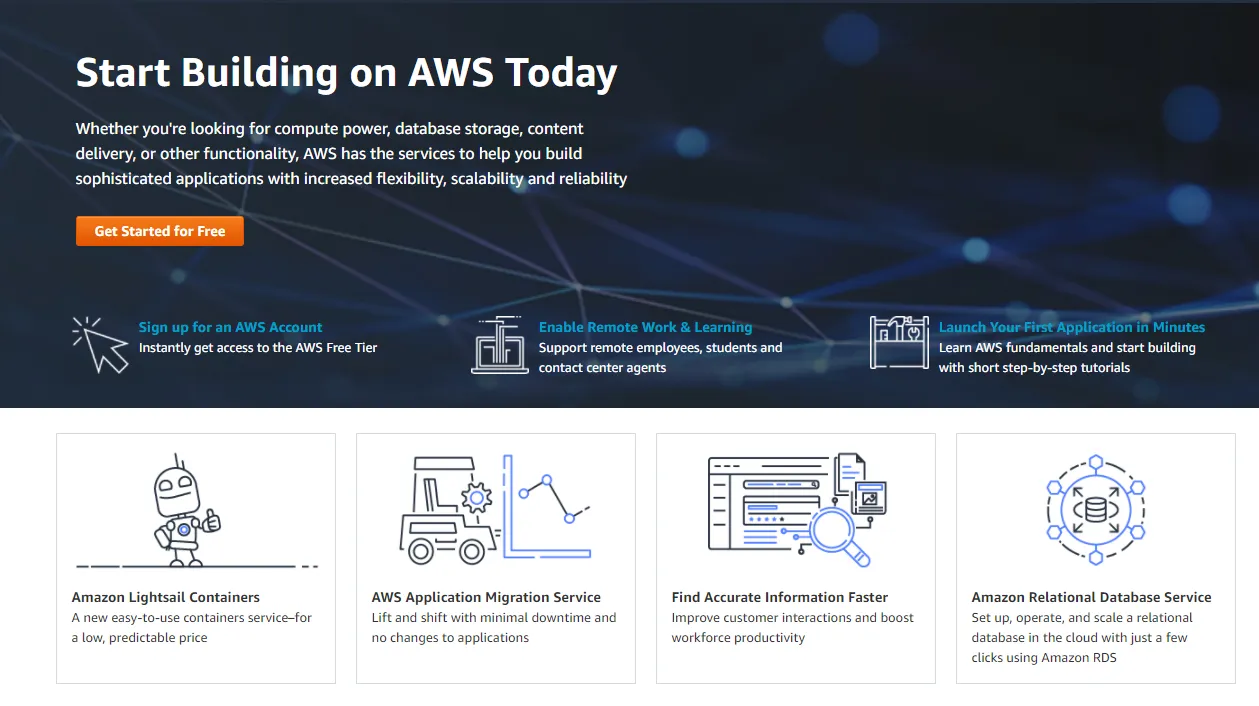
AWS continues to expand rapidly, in line with the continuing trend of digitization, platform development, and enterprise migration to digital infrastructures as they digitally transform their companies.
Technological investments support Amazon’s business. AWS has evolved into a developer community that enables Amazon to understand how AI and the Internet of Things (IoT) can be used and invest in future new projects.
4.9.5 Amazon Gaming
Amazon Game Studios is a lesser-known element of the Amazon business model. Third-party games are also available on the Amazon Digital Game Store.
4.9.6 Amazon Prime Video
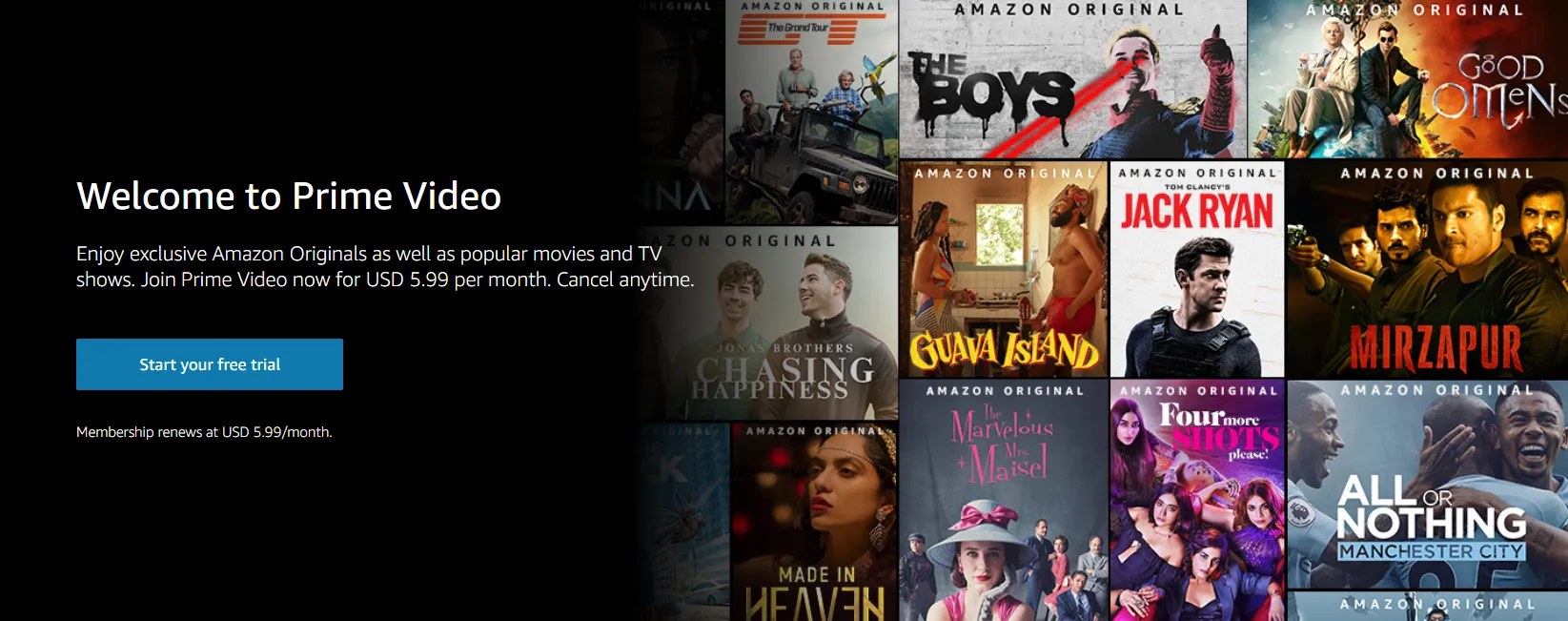
Amazon Prime is the primary subscription component of Amazon’s business model. The 2019 results indicate a large increase in Prime memberships. Amazon Prime Video, which competes directly with Netflix, Hulu, and HBO NOW, is included with Amazon Prime.
4.9.7 Amazon Fire Products
Amazon’s Fire products include computers, laptops, televisions, and mobile operating systems.
4.9.8 Amazon Tickets
Amazon Tickets debuted in the United Kingdom in 2015 and have since spread to the United States, Asia, and Europe. Its global ticketing company is also in the works.
This, however, is consistent with their overall entertainment component of their business model. “Our vision goes beyond just selling tickets, as we plan to disrupt the whole live entertainment experience, including what happens before, during, and after the show,” says Amazon Tickets.
4.9.10 Amazon Patents
Amazon owns over 1000 patents, many of which are licensed to other businesses.
4.9.11 Amazon Advertisements
The Amazon Ad network provides supported advertisements, display advertisements, and video advertising.
Few people are aware of the reach of Amazon’s advertisement network. In 2019, the bulk of ‘other’ income was made up of ad revenue, which increased by 39% yearly to $14 billion.
In 2019, Facebook’s ad revenue was $69.65 billion, while Google’s ad revenue is $134.8 billion.
Amazon’s ad network is successful because the customers who use it have a high level of buying intent. Everyone understands that switching from an ad to a landing page or promotional page entails the possibility of losing traffic and potential customers.
However, with Amazon, you are already on the site where you can shop, and people know and trust Amazon platform.
There will be no clicking away to find another website, landing page, or product. Ads are shown to users who are already on the web.
5. How Amazon Changed its Revenue Model Changed In Four Years?
Amazon is the world’s largest online retailer. Amazon started as an online bookstore and has since expanded to include almost every product imaginable.
As one of the richest and most powerful business people on the planet, Jeff Bezos survived the dot-com crash while creating a company that would endure for years to come.
We discussed the Amazon business model from a variety of angles. From the growth of its prime membership segment and Amazon’s evolution from a core commerce business to providing a holistic experience to its customers.
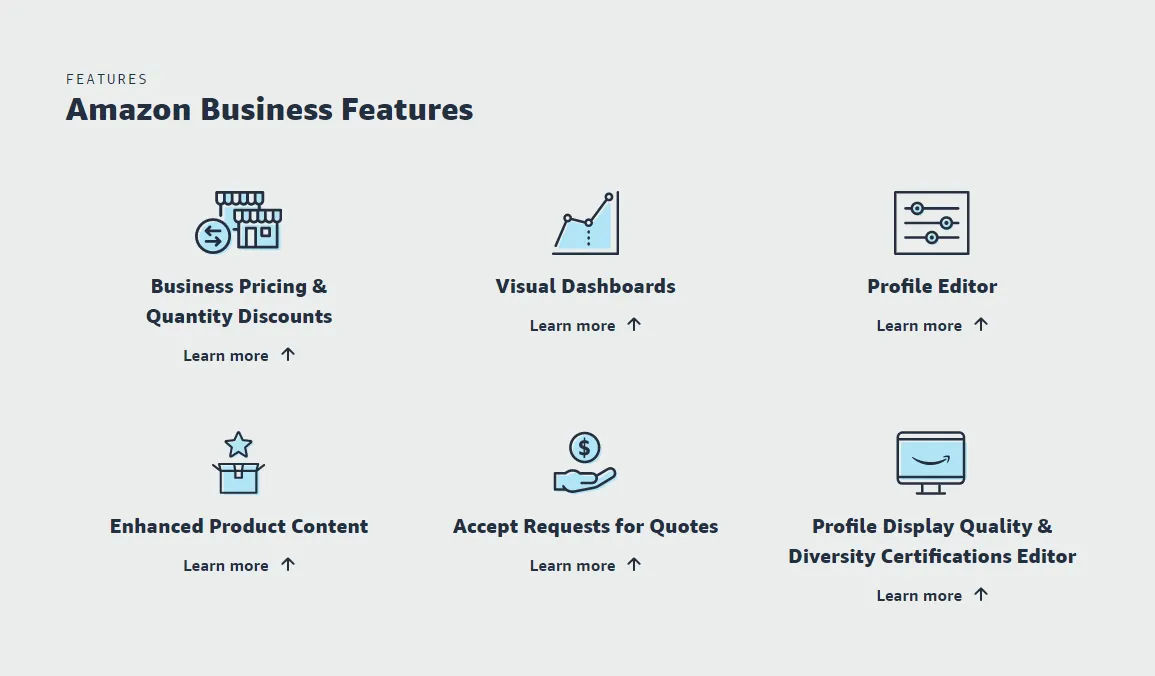
Although product revenues accounted for approximately 77 percent of total revenue in 2014, they decreased to approximately 61 percent in 2017.
Indeed, given Amazon’s size, other divisions such as AWS, subscription services, and third-party seller services have grown to be large businesses.
Indeed, I noted how Amazon was “swallowing the fish” as it increasingly shifted to a subscription-based business model.
However, even Amazon’s strategy is relentless in its pursuit of growth. As more people join Prime, they invest more money on the website.
Amazon generates more revenue. Additionally, the company operates on razor-thin profit margins on product sales. It leverages the cash conversion cycle to produce significant short-liquidity for the business, which it leverages to grow and take over multiple industries rapidly.
Also Read, The Roblox Business Model.
6. Final Thoughts about Amazon Business Model
Amazon is a technological conglomerate. It began in the 1990s as an online bookstore.
Today, Amazon is a one-stop-shop for anything imaginable. Jeff Bezos, Amazon’s founder, has said that the company is customer-centric.
However, what made and continues to make Amazon so appealing is the business model, creating value for multiple players.
Consumers locate and purchase items at a discount. Sellers may seek out new business opportunities or opt-out of carrying inventory entirely.
Indeed, Amazon operates its fulfillment center, which handles vendor inventories.
As a result, someone interested in starting an online store faces fewer barriers to entry.
AWS cloud services are a good fit for developers and businesses.
Via programs such as KDP, content owners can effectively monetize their information items.
Additionally, consumers can access Amazon’s original content via Amazon Prime.
Even though Amazon earns almost 70% of its income from merchandise sales, in reality, that segment of the company serves as the basis for the expansion of more profitable segments.
Amazon’s cash machine has allowed it to diversify its business model through Prime, Advertising, and AWS.
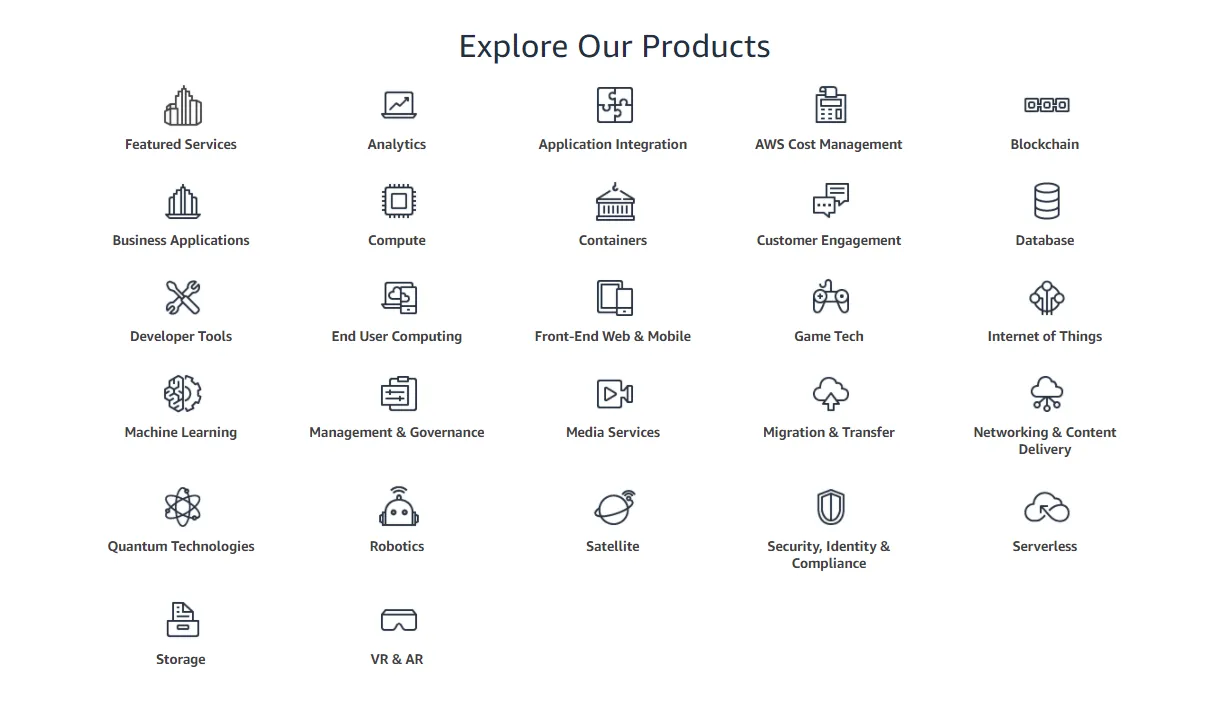
Thus, anyone who views Amazon as merely an online retailer has been duped by its sales but has neglected to examine how its business model functions!
Amazon teaches us an important lesson. For how much we enjoy classifying items into defined, unchanging categories and meanings.
Often, an organization that aspires to be a multibillion-dollar corporation must develop a hybrid business model that leverages multiple revenue streams and business models simultaneously.
If you enjoyed reading this article, please checkout How Does Peloton Make Money?